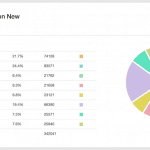Digital Platforms: The Virtual Classrooms That Transform India’s Youth into Productive Workers
How can a 20-something candidate be expected to have eight years of work experience for an entry-level job? It is a common quip around college campuses and job fairs. It is also a fair question that points to an underlying supply and demand problem; prospective employees complain of a lack of jobs, while employers opine that recent graduates are simply unemployable. This concern is not restricted to just one industry, and it can be effectively addressed through bridging programmes like skilling.
At an average age of 29 years, Indian society is one of the youngest in the world, and people aged 15-24 make up a third of the population. As clichéd as it sounds, a much-needed rejuvenation of the economy will depend on India’s youth reaching their full potential. Therefore, it has become necessary to secure youth employment and prepare this demographic to be productive and confident workers of tomorrow.
Digital Platforms as a Driver of Youth Employment
Notably, digital platforms provide first-time and stop-gap jobs to many youngsters. Therefore, these platforms are uniquely placed to provide the skills necessary to thrive in a digital age, including vocational, digital, financial and customer-service aptitudes. This can benefit the wider ecosystem of informal jobs in many ways: For instance, beauticians trained by Urban Company are also adept at handling their own finances online; drivers trained through Ola are aware of microfinance products they can use; and sellers on Flipkart are proficient at listing their products in English and understanding the tax requirements they have to meet. Each of these skills is transferable to other contexts, and together they contribute to transformational upskilling, by which all aspects of work are transformed thanks to a tectonic shift in the skill level of workers.
The key feature of the transferable skills gained by a platform worker is that they are useful personally, professionally and socially. They can be transplanted from one job to another, enabling the worker to participate in the economy around multiple services, through a singular skill gain. Examples of such skills include effective smartphone navigation, business and entrepreneurship skills, financial management, and communication skills. Obtaining digital financial skills and learning the processes of online safety, such as preventing cyberbullying or phishing attacks, are also important.
A Path to Horizontal and Vertical Mobility
For instance, transferable skills can allow a taxi driver to work as a delivery person in an online marketplace. In other words, they provide the worker with “horizontal mobility” across jobs. Therefore, it is particularly beneficial when a single platform offers multiple services, making it easy to switch from one job to another – like the “super-apps” of Southeast Asia, Grab and Go-Jek, or the platform workers in India who ferried passengers to hospitals and delivered essential goods such as medicines and groceries to COVID-stricken communities. Horizontal mobility, thus expanding the remunerative avenues of workers, is the hallmark of digital platforms, making these platforms flexible and attractive to the youth.
Similarly, such transferable skills allow for “vertical mobility” in jobs, which is also necessary to expand earning opportunities and accord an aspirational quality to the jobs in the market. Vertical mobility constitutes the gradual upskilling of a worker which results in their increased level of expertise for the job, thereby making them more adept at their work – and more likely to move up the career ladder within their organisation or profession. For instance, fashion sellers at Myntra receive training through their in-house entrepreneurship development programme to turn their passion and knack for sales into a successful business. This yields incremental improvements in the quality of services provided on the platform, also known as the network effect. There are also spin-off effects to this; a forthcoming publication by the Ola Mobility Institute finds that digital platforms in the mobility domain have spurred the use of smartphones among non-platform workers in Indian cities, implying that drivers not associated with any platform have also started using smartphones to connect with customers, use GPS-enabled navigation, etc.
Promoting Skilling Among Youth in India
As the value of digital platforms becomes clearer, a pertinent question at this juncture is: How can platforms be leveraged to achieve high rates of skilling among youth in India? There are three ways these platforms can impart job skills: face-to-face training, on-the-job learning and in-app support/video tutorials. As COVID-19 is a contemporary reality, livelihoods and worker training initiatives have to take social distancing into account when assessing these options. Thankfully, in a mobile-first country like India, training through online methods has great scope.
Due to this pandemic, many things previously thought to be impractical are now quite effective and achievable. For instance, the digital footprint created by platform-based training provides the easy reporting mechanism that has been lacking in skilling programmes thus far, enabling the creation of potential “Skill Certificates” or “Skill Passports” for workers that companies can fill in, certifying that a worker has been trained to undertake certain jobs. This can be envisaged as a “Skill Badge” in the platform worker’s online profile, which would ensure the transferability and transplantation of crucial long-term skills.
By promoting youth skilling and employment, platforms also integrate their workers with the broader vocational training context and emerge as allies of the government’s skill development programmes. These include Pradhan Mantri Kaushal Vikas Yojana, a flagship scheme of the Ministry of Skill Development and Entrepreneurship; Skills Acquisition and Knowledge Awareness for Livelihood, a programme designed to fulfil sub-missions under the national skilling mission; and YuWaah, a skilling programme targeting the age group 10-24 years.
Today, as we celebrate World Youth Skills Day, it is useful to recognise the value of the concrete steps digital platforms are taking to advance the interests of India’s approximately 446 million youth, by upskilling them and easing their transition to gainful employment.
Sreelakshmi Ramachandran is a Research Associate at the Ola Mobility Institute.
Photo courtesy of ILO Asia-Pacific.
- Categories
- Education, Technology



